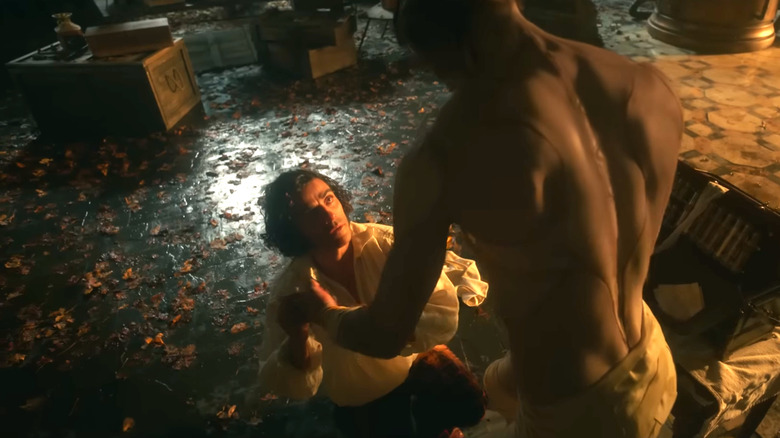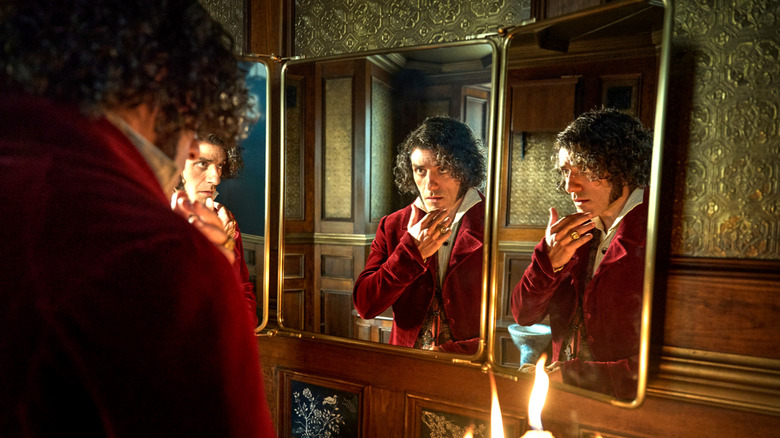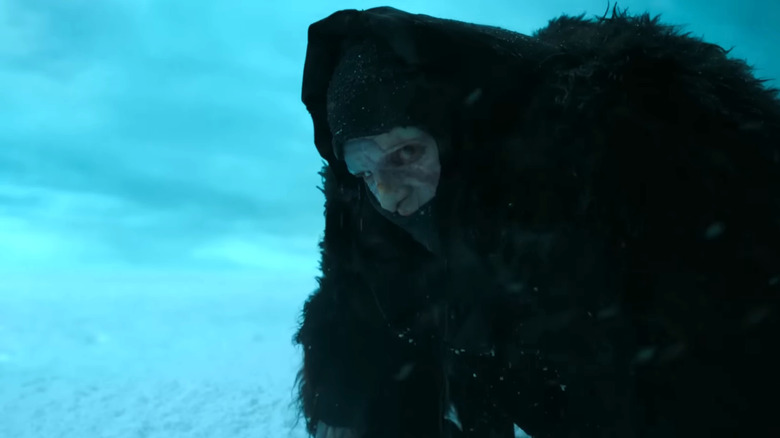Guillermo Del Toro's Frankenstein Ending Explained: A Famous Horror Tragedy Evolves
Spoilers follow.
Those who were fans of Mary Shelley's 1818 gothic sci-fi novel "Frankenstein" may be surprised by how much the new Guillermo del Toro movie switches things up. Dr. Frankenstein (Oscar Isaac) now has the backstory of having an abusive father. It also softens up the Creature (played this time around by Jacob Elordi), and ends on a surprisingly wholesome note of forgiveness between the two main characters. Guillermo del Toro's take on "Frankenstein" is a lot like Stanley Kubrick's take on "The Shining," in that if you're a purist for the book you're probably not going to love it.
But while del Toro may not have stayed true to the literal text of "Frankenstein," he did stay true to the book's autobiographical roots. As he stated in a post-movie Q&A at the Toronto International Film Festival, his goal of the movie was to make it "as painful and as biographical for me as it was for [Shelley]."
Shelley's "Frankenstein" was, as many readers believe, strongly inspired by the events of her own life. Shelley's mother died shortly after her birth and Shelly's father neglected her, especially after she married Percy Shelley against his wishes. Scholars have often interpreted Shelley's depiction of Frankenstein's monster — a creature without a mother and who was neglected by his "father" Frankenstein — as a reflection of Shelley's own childhood situation.
Both Shelley and del Toro's versions of "Frankenstein" are about the relationship between father and child, but each author has a different take on the subject. As del Toro put it, "I'll speak not about a monster and a creator, but about me and my father and me and my kids. And it'll be difficult to talk about it, as it must have been difficult for her."
Del Toro hardens Frankenstein, softens the Creature
Del Toro's Frankenstein is someone who grew up with a cold, abusive father, and he repeats that abuse on the Creature. Whereas in the book Frankenstein's abandonment of the Creature is an understandable reaction to a frightful situation, here Frankenstein doesn't abandon the Creature out of fear but out of selfish disgust. He chains up the Creature, bullies him, and tries to light him on fire. This is made more despicable by how childlike the Creature's portrayed here; the book only had his good side revealed halfway through, while the Creature here behaves like an innocent oversized toddler from minute one.
Some may be frustrated by this change, which admittedly makes the Creature a less interesting character than he is in the book. But it seems that del Toro understands that Frankenstein, not the Creature, is the most interesting character of the story, the one who goes through the most complex emotional journey. In fact it's a little played-out at this point to ask the audience to debate the morals of the abandoned Creature, a character who modern audiences are so easily able to extend their sympathies to even in his darkest iterations.
The movie instead centers its most compelling moral conundrum on whether Frankenstein, a vindictive deadbeat dad, can redeem himself for his failures as a father. It's not about whether the Creature can be forgiven for his crimes (he barely harms any named characters here), but whether Frankenstein can be forgiven for his. This question is present throughout the original book, but it's not tackled head-on like it is here. The movie asks how the Creature can finally get Frankenstein to take some damn responsibility, and whether love can still be found in a relationship as damaged as this one.
In del Toro's'Frankenstein, everyone learns the right lesson
In the movie's final moments, Frankenstein does something Shelley's version never managed: he properly apologizes to his creation. It's a reflection of a common fantasy a lot of kids of terrible parents have: that their parent might actually acknowledge that they did them wrong. For many people (like Frankenstein himself in this film) their abusive parent never apologizes, but at least the Creature gets his moment of closure. He ends the film feeling at peace, appreciating the warmth of the sun and helping Captain Anderson's ship break out of the bitter ice.
The Creature's saving of the ship is perhaps the adaptation's most hopeful moment, as it's the first scene where regular people aren't panicking in his presence. The Creature's forgiving of Frankenstein is by extension a forgiving of humanity. Del Toro's Creature doesn't end his story as some self-described wretch who plans to burn himself alive, but as a guy who gets to be a hero to people who otherwise would've frozen to death if he hadn't come along. An apology from his father has saved the Creature's life, and saved his soul too.
Throughout countless adaptations and retellings over the years, the Creature has been trapped in a cycle of misery not unlike the cycles of abuse so many families are wrapped up in. But whereas most versions of the Creature end up consumed by guilt and rage, del Toro's Creature ends his story with freedom. Thanks to the apology from his father and the crew's willingness to let him help, the Creature has done what once seemed impossible in a serious "Frankenstein" story: he's found hope for his future and peace with himself. It's taken over 200 years, but Frankenstein's monster has gotten his happy ending.


